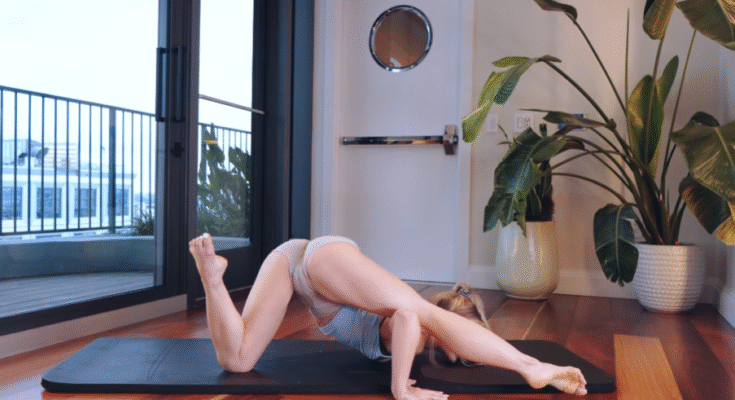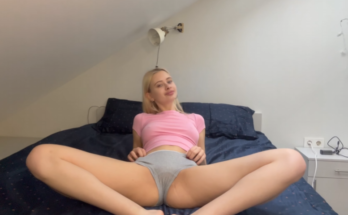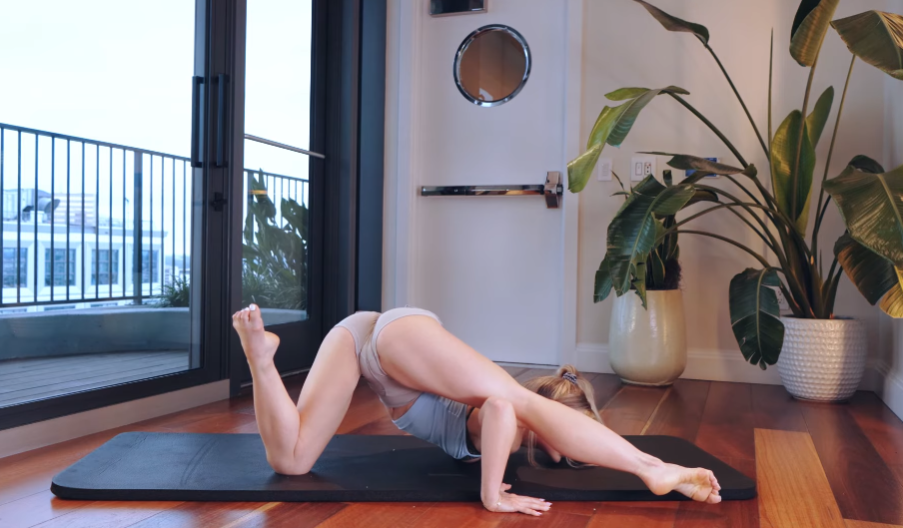
Starting your fitness or wellness journey can sometimes feel intimidating, especially when you see people easily bending into yoga poses or stretching their legs behind their heads. But don’t worry — everyone starts somewhere. Stretching is not about showing off flexibility; it’s about connecting with your body, improving movement, and feeling more alive.
In this guide, we’ll go through a full-body stretch routine for beginners, designed to loosen tight muscles, improve posture, and relieve stress. Whether you’ve been sitting at a desk all day, working out hard, or just want to feel lighter, this gentle routine will help you open up every major muscle group — from your neck all the way down to your toes.
So roll out your mat, take a deep breath, and let’s begin! 🌞
💨 Why Stretching Matters
Before we jump into the stretches, let’s talk about why you should stretch:
- Improves Flexibility: Regular stretching increases the range of motion in your joints and muscles.
- Reduces Stiffness and Pain: It helps release tension from tight areas — especially the neck, shoulders, back, and hips.
- Enhances Blood Circulation: Stretching boosts oxygen flow, giving your muscles fresh energy.
- Promotes Relaxation: Deep, mindful stretching helps calm the nervous system, reduce stress, and improve sleep quality.
- Prevents Injury: A flexible, warm body is less prone to strains and pulls during physical activity.
You don’t need to be an athlete or dancer to stretch — you just need consistency and patience.
🧘♀️ Getting Started
Duration: 10–15 minutes
Equipment: Yoga mat or soft surface
Tip: Breathe slowly through your nose, exhaling through your mouth. Never force a stretch — your body should feel tension but not pain.
🧠 1. Neck & Shoulder Stretch (2 minutes)
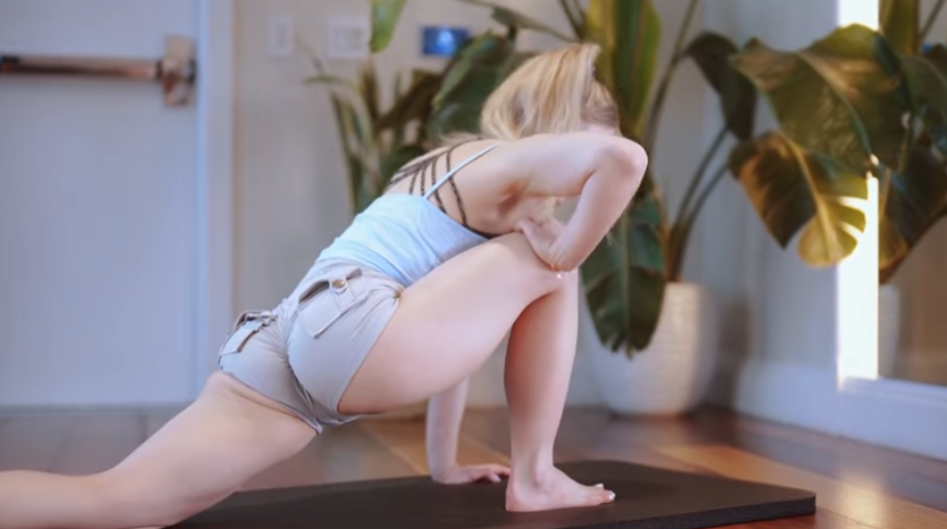
We hold a lot of stress in our neck and shoulders, especially from using phones or computers. This gentle stretch relieves that built-up tension.
Step-by-step:
- Sit or stand tall, keeping your spine straight.
- Gently drop your right ear toward your right shoulder.
- Use your right hand to apply a light pressure for a deeper stretch.
- Hold for 20–30 seconds, then switch sides.
- Next, interlace your fingers behind your head, drop your chin toward your chest, and feel the stretch along your upper back.
- Hold for 30 seconds and breathe deeply.
Bonus tip: Slowly roll your shoulders backward in big circles — 5 times each direction — to release tension.
🫁 2. Upper Back & Chest Opener (2 minutes)
This stretch improves posture, opens your chest, and counteracts the hunching effect from sitting too long.
Step-by-step:
- Stand tall with your feet shoulder-width apart.
- Clasp your hands behind your back and gently lift them upward as you open your chest.
- Look slightly upward and take a deep breath in.
- Hold for 30 seconds.
- Now release, bring your arms in front, and hug yourself — rounding your upper back like a turtle shell.
- Feel the stretch between your shoulder blades. Hold for another 30 seconds.
Tip: Imagine breathing space into your chest and upper back with each inhale.
🌿 3. Side Stretch (1 minute)
Side stretches improve flexibility in your torso and help you breathe more deeply.
Step-by-step:
- Stand with feet hip-width apart.
- Raise your right arm overhead, keeping your left hand on your hip.
- Lean gently to the left, keeping your chest open and not twisting forward.
- Hold for 20–30 seconds, then switch sides.
Variation: If seated, cross your legs and reach your arm overhead the same way — it’s just as effective.
🦵 4. Hamstring & Lower Back Stretch (2 minutes)
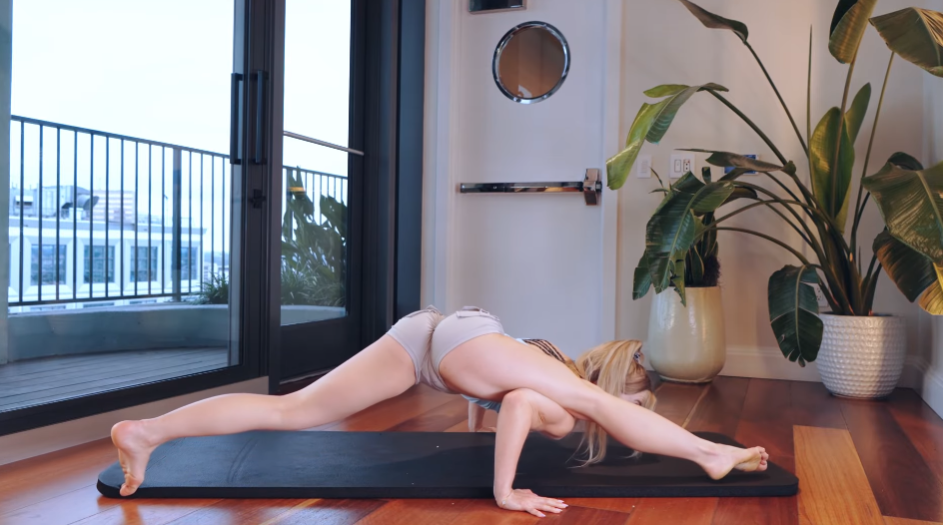
Tight hamstrings can cause lower back discomfort, so this stretch is a must for beginners.
Step-by-step:
- Sit on the floor with both legs extended in front of you.
- Inhale, lengthen your spine, and as you exhale, hinge forward from your hips.
- Try to reach for your toes, ankles, or shins — wherever you feel a stretch without pain.
- Keep your back flat (avoid rounding).
- Hold for 45–60 seconds, breathing deeply.
Tip: Slightly bend your knees if your hamstrings are too tight. The goal is to stretch, not strain.
🍑 5. Hip Flexor Stretch (2 minutes)
If you sit a lot, your hip flexors can become tight — causing discomfort in the lower back and hips.
Step-by-step:
- Kneel on your right knee, with your left foot in front, forming a 90-degree angle.
- Keep your torso upright and gently push your hips forward until you feel a stretch in your right hip.
- Hold for 30–45 seconds, then switch sides.
Bonus tip: To deepen the stretch, raise the arm on the same side as the kneeling leg overhead and lean slightly away.
🧎♀️ 6. Cat-Cow Stretch (1 minute)
This classic yoga movement gently loosens the spine and boosts flexibility in your back and neck.
Step-by-step:
- Start on all fours, with your hands under your shoulders and knees under your hips.
- Inhale: Drop your belly down, lift your head and tailbone — this is the Cow pose.
- Exhale: Round your back toward the ceiling, tucking your chin to your chest — this is the Cat pose.
- Repeat the movement slowly for 8–10 rounds, syncing it with your breath.
This simple motion awakens the entire spine, making you feel refreshed and aligned.
🦶 7. Quad Stretch (1 minute)
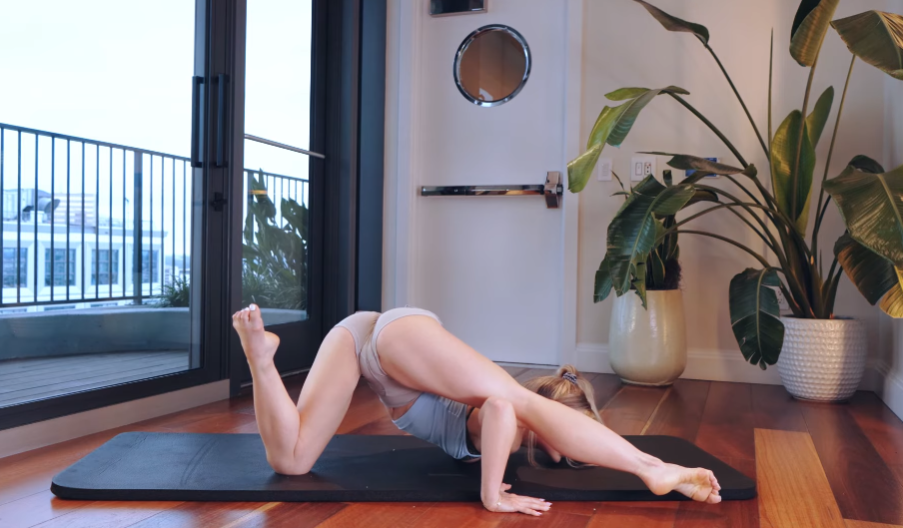
Your quadriceps (front thigh muscles) need love too, especially after walking, running, or sitting long hours.
Step-by-step:
- Stand tall and hold onto a wall or chair for balance.
- Bend your right knee and grab your right ankle behind you.
- Pull your heel gently toward your glutes.
- Keep your knees close together and chest lifted.
- Hold for 30 seconds, then switch legs.
Tip: Engage your core to keep balance and protect your lower back.
🧘♂️ 8. Inner Thigh & Groin Stretch (1 minute)
This helps open the hips and improves mobility in your legs.
Step-by-step:
- Sit with the soles of your feet together and let your knees drop gently to the sides.
- Hold your feet with your hands and sit tall.
- Gently press your knees toward the floor using your elbows.
- Hold for 45–60 seconds, breathing slowly.
This stretch is great before or after any leg workout, as it keeps your inner thighs supple.
🌸 9. Calf & Ankle Stretch (1 minute)
Strong and flexible calves support your entire lower body and improve balance.
Step-by-step:
- Stand facing a wall.
- Step one foot back and press your heel into the floor.
- Bend your front knee slightly and lean forward until you feel a stretch in your calf.
- Hold for 30 seconds, then switch sides.
To stretch your ankles, sit down and rotate each foot slowly in circles — 10 times clockwise, 10 times counterclockwise.
🌙 10. Final Full Body Reach (1 minute)
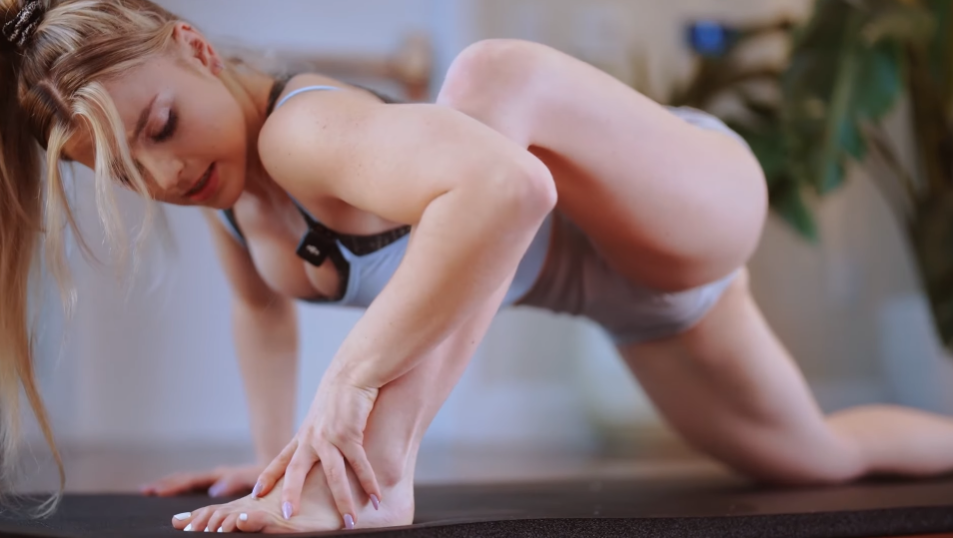
Let’s finish with a stretch that combines everything — relaxation, posture, and deep breathing.
Step-by-step:
- Stand tall with feet shoulder-width apart.
- Inhale, raise both arms overhead, interlace your fingers, and reach as high as you can.
- Rise onto your toes for an extra stretch through your entire body.
- Exhale, release your arms, and slowly roll down toward your toes.
- Let your head and arms hang loose for a moment, then roll back up slowly.
Do this two or three times — and feel your body unwind with every breath.
🌞 Cooldown & Reflection
Take a moment to stand still, eyes closed, and breathe. Notice how your muscles feel — lighter, warmer, more alive. That’s the power of movement and mindfulness working together.
Stretching isn’t just physical; it’s emotional. It reminds you to slow down, to listen to your body, and to appreciate its quiet strength.
Whether you do this routine in the morning to wake up or in the evening to relax, consistency is key. The more you stretch, the more your body opens up, and the more peace you’ll feel inside.
So take it slow, smile through the stretches, and remember: flexibility isn’t about how far you go — it’s about how good you feel getting there. 🌿🧘♀️✨
— End of Routine —
